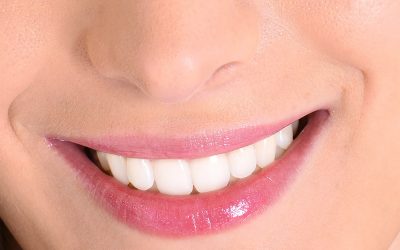Maintaining a luminous smile is equally important both aesthetically and health-wise, requiring the same dedicated efforts over time to preserve. Protecting against tooth loss and gum disease requires ongoing, diligent care from you as an individual. Tooth loss and gum disease, typically brought on by poor oral hygiene practices, unhealthy diet, and lifestyle decisions can have devastating repercussions for your quality of life. They can create difficulties eating and speaking as well as damage your self-confidence. By understanding the causes, recognizing symptoms, and adhering to preventive care practices, Receding gums treatment, you can ensure your smile remains bright, healthy, and strong. Remember: Achieved health through dental health goes far beyond mere aesthetics – it plays an essential role in overall well-being and happiness.
Symptoms of receding gums
Understanding its symptoms early and managing them effectively is crucial for timely detection and successful management. Here are the key Symptoms of receding gums :
Tooth Sensitivity:
Receding gums often increase tooth sensitivity due to exposed roots containing nerve endings that become more sensitive to temperature fluctuations and specific foods.
Visible Alterations to Teeth:
Over time, you may notice that your teeth seem longer than usual; this could indicate that the gums have receded, leading to new exposure of tooth structures and perhaps alteration of their shapes due to this newfound exposure.
Loose Teeth:
With time, receding gums may lead to the gradual disintegration of support for your teeth, leaving them more susceptible to becoming loose in their sockets, leading to increased sensitivity and discomfort.
Bleeding During Brushing:
Experiences with bleeding during brushing or flossing can be seen as an early indicator of gingivitis, the initial stage of gum disease. Receding gums often cause greater bleeding during oral hygiene routines due to receded gums causing the gums to bleed more readily than usual during these routines.
Changes to Bite Align:
Receding gums may affect how your teeth come together when biting or chewing, leading to an altered alignment of your bite.
How to cure gum recession?
Curing gum recession requires both professional dental treatments and good oral hygiene practices. Here is a guide for understanding available Receding gums treatment and preventive measures:
Scaling and Root Planing:
This deep cleaning removes plaque and tartar build-up beneath the gum line, smoothing root surfaces to encourage gum tissue to reattach itself back onto teeth and limit further recession.
Gum Graft Surgery:
Gum grafting surgery may be necessary for cases of extensive recession. This involves harvesting tissue from another part of your mouth (such as the palate) and attaching it to cover exposed roots and stimulate gum tissue regeneration.
Regenerative Procedures:
This usually entails folding back the gum tissue, eliminating disease-causing bacteria, and applying regenerative materials like membranes, graft tissues, or tissue-stimulating proteins to support your body’s natural ability to regrow bone and tissue.
Home Care and Lifestyle Changes
If you are wondering if I can reverse gum recession, here are some habits that can help you reverse it.
Improved Oral Hygiene:
Brush gently using a soft-bristle toothbrush and fluoride toothpaste, taking care not to scrub over as this can worsen gum recession. Also, floss daily to remove plaque build-up between teeth.
Quit Smoking:
Cigarette use can exacerbate gum recession and reduce its effectiveness of treatment, exacerbating symptoms.
Nutrition:
Adopting a diet rich in essential vitamins and minerals is key to strengthening gums and improving overall dental health.
Consistent Dental Visits:
Scheduling regular appointments with your dentist is crucial for maintaining gum health and overall oral wellness.
Understanding its causes is critical to both effective prevention and treatment strategies; here are the primary factors contributing to gum recession:
Causes of Gum Recession
Check out the number of Causes of gum recession, which are as follows:
Periodontal Disease:
Bacterial gum infections destroy gum tissue and supporting bones that help hold teeth in place, ultimately causing recession of gum tissue and supporting bone structure that keeps your teeth stable.
Aggressive Tooth Brushing:
Brushing too aggressively or using a hard-bristled toothbrush can wear away enamel along the gum line and cause your gums to recede, leading to periodontal disease and eventually receding gums.
Poor Dental Care:
Failing to adequately brush, floss, and rinse with an antibacterial mouthwash allows plaque build-up on teeth to turn into tartar — an insoluble substance that accumulates between your teeth and can cause gum recession.
Genetic Predisposition:
Certain people may be more prone to gum disease regardless of how well they care for their teeth; genetics could play a key role in your gum health.
Hormonal Changes:
Shifts in female hormone levels during puberty, pregnancy, and menopause can make gums more vulnerable and susceptible to gum recession.
Tobacco Products:
Smokers and those who use other tobacco products are more likely to develop hard-to-remove plaque that causes gum recession.
Misaligning Teeth or Malocclusion:
Crookedness in your teeth and an improper bite can put an added strain on the gums and bone, potentially leading to gum recession and further health complications.
Trauma to Gum Tissue:
Accidentally damaging the gum tissue during sports or aggressive dental cleaning may cause recession and lead to recession of gums.
Bottom Line
Gum recession, an increasingly prevalent dental condition where gums pull away from tooth surfaces to expose roots, can pose serious oral health concerns if left unchecked. Preventative measures can be an invaluable way to manage and even avoid oral conditions effectively, and this guide offers valuable insights and practical strategies to protect and treat receding gums. For the best help, it is best to connect with Dr. Savita, a professional dentist who treats gum recessions. Visit her now.




